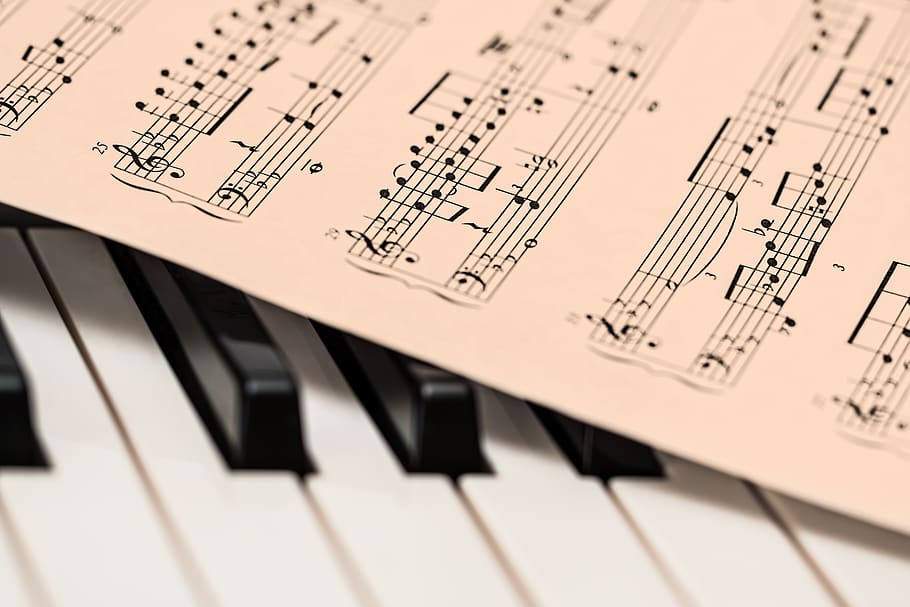Learning Piano Chords Online: Mixing Creativity and Knowledge
- 1 The Canvas of Chords: Visualizing the Artistry
- 2 Top 5 Tips to Master Chords
- 2.1 Start with the Basics
- 2.2 Utilize Interactive Features
- 2.3 Practice Regularly with Guided Exercises
- 2.4 Explore Chord Variations
- 2.5 Apply Chords in Musical Context
- 2.6 Cultural Influences: Art and Science in Diverse Chord Traditions
- 3 Final Thoughts
“Music is the literature of the heart; it commences where speech ends.” – Alphonse de Lamartine
A piano chord is like a secret code that, when unlocked, fills the air with harmony and emotion. A group of notes played together create a rich, full sound, serving as the foundation for much of the music we love. Whether it’s the powerful surge of a classical piece, the soulful depth of a blues riff, or the catchy hook of a pop song, chords are the building blocks of musical storytelling.
The Canvas of Chords: Visualizing the Artistry
Imagine the piano keyboard as a painter’s canvas, where chords are the brushstrokes that color the musical landscape. Each piano chord, a unique blend of notes, combines to create the emotional depth and texture that define a piece of music. From the persistent strength of a C Major chord (C-E-G) to the wistful longing of an A Minor chord (A-C-E) and the dreamy tranquility of an E Major chord (E-G#-B), every chord contributes to the narrative of the composition.
Exploring further the complexity of a
- The F7 chord (F-A-C-Eb) introduces a touch of tension and anticipation
- G Major 7 chord (G-B-D-F#) offers a resolution with its serene conclusion.
When woven together, these elements create a tapestry of sound that can convey many emotions and stories. Understanding and visualizing chords in this artistic manner opens up a new dimension of piano playing, where you’re not just hitting keys but painting with sounds.
Online learning platforms serve as the palette from which you can draw knowledge and inspiration, providing the tools to explore this vast, colorful musical landscape. Through interactive tutorials and guided practice, you begin to see the patterns and relationships between chords, enabling you to compose your masterpieces on the canvas of the keyboard.
Top 5 Tips to Master Chords
Mastering piano chords can seem daunting, but with the advent of online apps, this crucial aspect of music learning has become more accessible and engaging. Here are the top 5 tips for using online apps to master piano chords:
Start with the Basics
Before diving into complex chords, ensure you have a solid understanding of basic major and minor chords. Many online apps offer structured lessons that introduce chords progressively. Focus on mastering simple chords first, like C Major, A Minor, or G Major. Understanding these basics will provide a foundation for learning more complex chord structures later.
Utilize Interactive Features
Take full advantage of the interactive features that online apps provide. Many apps include real-time feedback mechanisms that listen to your playing and offer instant corrections. This immediate feedback can accelerate your learning, helping you to correct mistakes quickly and efficiently.
Practice Regularly with Guided Exercises
Consistency is vital when learning chords. Look for apps that offer guided practice exercises tailored to chord playing. These exercises often include drills focusing on smoothly switching between chords and understanding chord progressions. Regular practice using these guided exercises can significantly improve your chord-playing skills.
Explore Chord Variations
Once you’re comfortable with basic chords, challenge yourself by exploring variations such as seventh, suspended, and diminished chords. Many online apps provide lessons on these variations, with examples and practice exercises. Learning these variations will enhance your chord vocabulary and deepen your understanding of musical harmony.
Apply Chords in Musical Context
Learning chords in isolation is one thing, but applying them in a musical context is where true mastery begins. Look for apps that offer you the chance to play along with songs or backing tracks. This practice helps you understand how chords fit within a piece of music and how they contribute to the overall sound. Playing along with music also improves your timing and rhythm, essential skills for any pianist.
Cultural Influences: Art and Science in Diverse Chord Traditions
In Western music, the harmonic system is built on the foundation of major and minor chords, creating patterns of tension and resolution that have dominated classical, jazz, and pop music. This system uses the 12-tone equal temperament, allowing various chord progressions and modulations. Western music often emphasizes using chords to support melody and establish the key of a piece.
Contrastingly, Indian classical music emphasizes melody and rhythm over harmony. However, the concept of chords finds its expression through the tanpura drone, providing a constant pitch reference for the melodic improvisations. When it occurs, harmony is often a byproduct of the intertwining of melodic lines rather than a sequence of chord changes.
With its rich rhythmic and percussive traditions, African music utilizes chords in a way that supports rhythm and groove. Using extended and added-tone chords in African-influenced genres like Afrobeat and Highlife adds color and texture, creating a vibrant tapestry of sound that encourages movement and dance.
Middle Eastern music, with its quarter-tone scales and modal system known as maqamat, offers a different perspective on harmony. Chords may not be the focus, but the interaction between the modes and the drone notes can create a harmonic richness that is exotic and profoundly moving to the unaccustomed ear.
Final Thoughts
Exploring the diverse chord traditions reveals the adaptability and variety of music as a form of expression across cultures. It highlights the innovative ways different societies have harnessed the power of chords to enrich their musical heritage. Understanding these traditions not only broadens our musical knowledge but also deepens our appreciation for the universal power of music to transcend cultural and linguistic barriers, uniting us in the shared experience of sound and emotion.
By following some tips and making the most of the resources available through online apps, mastering piano chords can be a rewarding and enjoyable part of your musical journey. The convenience and depth of learning these apps make them an invaluable tool for aspiring pianists looking to deepen their chord-playing skills.


















